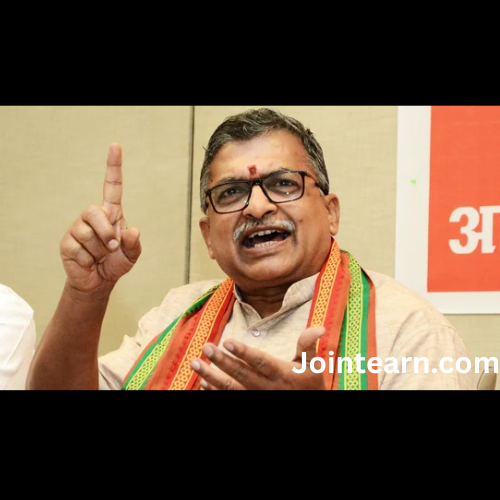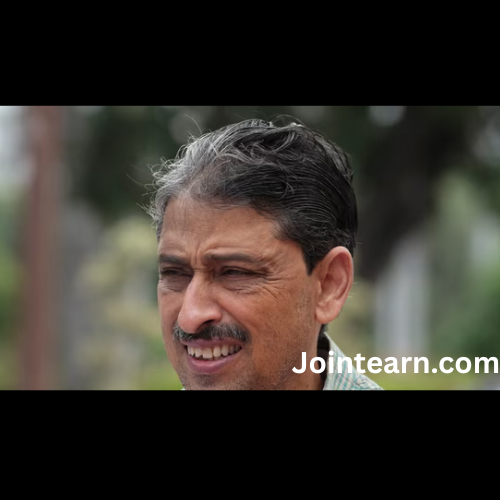
ChatGPT said:
The Vishwa Hindu Parishad (VHP) has raised concerns over what it terms “crypto-Christians,” alleging that certain individuals in India practice Christianity privately while remaining officially registered as Hindus in government records, a strategy the organization claims is used to continue availing benefits meant for other communities. The issue was highlighted on Sunday by VHP General Secretary Milind Parande during a press briefing, in which he detailed what the organization sees as a systematic pattern of hidden religious conversion across parts of the country.
Parande argued that many individuals who convert to Christianity do not update their official records after conversion, effectively rendering their new religious affiliation invisible to government authorities as well as broader society. “Only the Church knows their true religious affiliation,” he stated, claiming that a deliberate strategy is employed to keep conversions “under the radar.” According to Parande, converts intentionally avoid changing their names or other identifying information in official documents so that their Christian faith remains undisclosed. “This way, Christians can claim that conversions are not taking place, and population statistics appear unchanged,” he added.
The VHP leader cited voter list anomalies as evidence supporting these claims. He noted that in certain villages, official records show no Christian residents, yet multiple churches exist in those same areas. “When the VHP examines voter lists, some villages show no Christians at all, yet there are multiple churches there. If no Christians live in those villages, then for whom were these churches built? It clearly indicates they are meant for conversions,” Parande said. This, he asserted, demonstrates a pattern of hidden religious practice combined with the strategic maintenance of official Hindu identity, allowing individuals to continue accessing government reservations and benefits that they would otherwise lose upon formally declaring their conversion.
In addition to raising concerns about alleged hidden conversions, Parande addressed broader societal issues, linking them to perceived threats to Hindu communities. He claimed that both domestic and foreign actors are allegedly engaged in efforts to weaken the Hindu population in India. Among these, he identified the issue of drug addiction among youth as a critical concern. “India lies between the ‘Golden Crescent’—covering Iran, Afghanistan, and Pakistan—and the ‘Golden Triangle,’ which includes Laos, Thailand, and Myanmar—two major narcotics-producing regions,” Parande explained. He warned that India’s geographic location makes it not only a transit route for narcotics but also a direct target for efforts to induce substance abuse among its population, particularly its youth.
To address what it perceives as these dual threats—hidden religious conversions and drug abuse—the VHP has outlined plans to mobilize affiliated organizations, including the Bajrang Dal and Durga Vahini, to conduct nationwide awareness campaigns. According to Parande, Bajrang Dal volunteers are expected to visit nearly 6,000 administrative blocks across India in November and December to engage young people in anti-drug initiatives. Similarly, Durga Vahini is projected to reach approximately 4,000 blocks during the same period, with the dual aim of raising awareness about the risks of drug addiction and encouraging youth to maintain “cultural and moral discipline,” as characterized by the organization.
The VHP official framed drug addiction as not merely a personal or family issue but as a threat to the broader social and economic stability of the country. He asserted that addiction undermines family structures, diminishes financial stability, and poses a public health hazard. By linking these issues with the concept of “crypto-Christians,” Parande suggested that both hidden religious conversions and the targeting of youth through drugs are part of broader schemes aimed at weakening traditional Hindu society. He urged communities to be vigilant and emphasized the need for collective action to safeguard social, cultural, and religious integrity.
Critics of the VHP’s position may argue that the organization’s claims about hidden conversions are difficult to substantiate and could reflect political or ideological concerns more than documented evidence. Official records and legal frameworks generally require individuals to update their religious status for formal recognition, though enforcement and monitoring can vary across states and localities. Nonetheless, Parande’s comments signal the continued emphasis of the VHP on issues it perceives as existential threats to Hindu communities, framing the organization’s agenda around the protection of religious identity and social cohesion.
The discussion of “crypto-Christians” fits into a wider pattern of debates in India around religious conversions, caste-based reservations, and social benefits. While the Indian Constitution guarantees the freedom to profess, practice, and propagate religion, certain communities have historically been eligible for reserved educational, employment, and political benefits. The VHP’s claims suggest that hidden conversions could undermine these mechanisms by allowing individuals who have formally adopted another religion to continue accessing entitlements designated for Scheduled Castes, Scheduled Tribes, or other backward classes. These concerns, whether widely substantiated or not, resonate with broader conversations in Indian society about equitable access to resources, social justice, and the integrity of official demographic data.
Parande’s remarks also demonstrate the VHP’s strategy of combining social activism with organized outreach. By mobilizing groups such as the Bajrang Dal and Durga Vahini, the VHP aims to create a structured, nationwide effort to influence public opinion and behavior, particularly among youth. The planned campaigns on drug awareness highlight the organization’s approach of coupling moral and cultural messaging with practical public health initiatives. According to the VHP, these campaigns are designed to foster awareness and resistance to drugs while reinforcing the notion of community vigilance and collective responsibility.
At the core of the VHP’s argument is a narrative that links religious identity, social benefits, and perceived threats from both internal and external actors. By framing certain individuals as “crypto-Christians” and alleging their role in changing demographic and social dynamics covertly, the organization emphasizes vigilance over both spiritual and material dimensions of life. Simultaneously, the focus on drug addiction among youth serves as a complementary concern, suggesting that societal vulnerabilities are multidimensional and require proactive engagement from communities themselves.
In conclusion, the Vishwa Hindu Parishad’s recent statements highlight the organization’s focus on what it perceives as two critical threats to Hindu society: hidden conversions and the increasing risk of drug addiction among youth. Milind Parande articulated a detailed account of alleged “crypto-Christians,” citing voter list anomalies and the presence of multiple churches in villages officially recorded as having no Christian residents. He also outlined the organization’s plans to counter drug abuse through outreach campaigns by its affiliated groups, Bajrang Dal and Durga Vahini, emphasizing the social, economic, and cultural implications of substance abuse. Whether or not these claims are widely substantiated, the statements reflect the VHP’s ongoing agenda to mobilize communities around issues of religious identity, social welfare, and cultural preservation, aiming to protect what it perceives as the moral and social fabric of Hindu society in India.


Leave a Reply